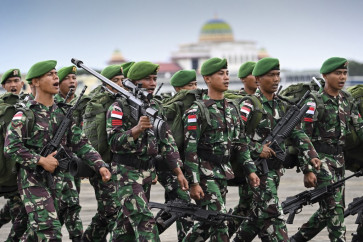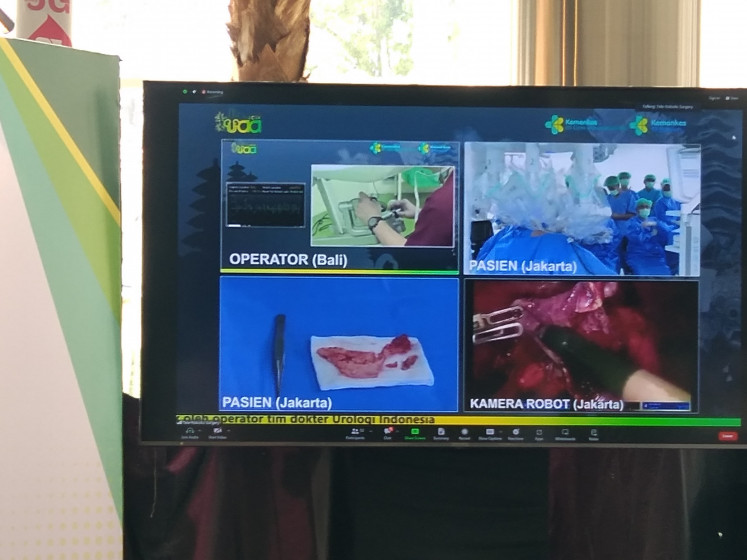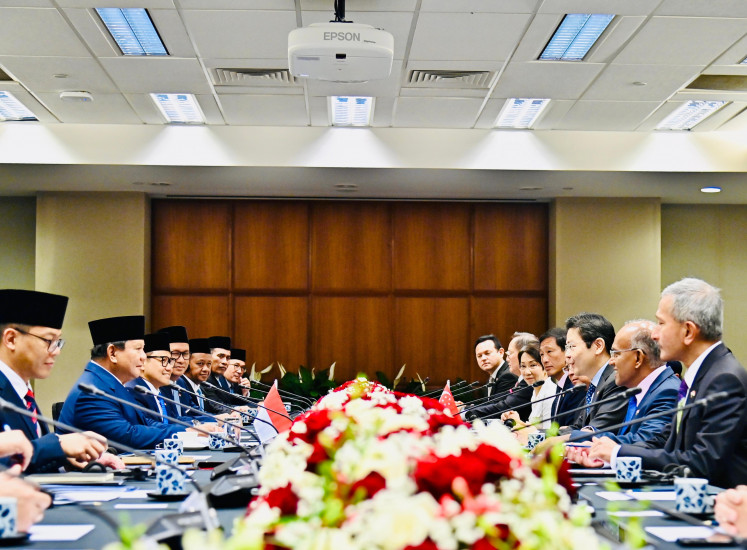Popular Reads
Top Results
Can't find what you're looking for?
View all search resultsPopular Reads
Top Results
Can't find what you're looking for?
View all search resultsLessons from Saemaul Movement
The 2015 state budget brought many changes in its posture
Change text size
Gift Premium Articles
to Anyone

T
he 2015 state budget brought many changes in its posture. Starting with fuel subsidy reform, fiscal space was expanded to give room for the government to spend more on infrastructure and to allocate more funds directly to villages.
The village fund is based on Law No. 6/2014 on villages, which is aimed at creating more equality within all regions in Indonesia. Many have acknowledged that equality is still one of the major issues facing Indonesia nowadays.
The village fund is allocated for village development as well as to empower villagers. The government allocated Rp 9.1 trillion (US$630 million) this year for village funds.
Villages should have their own budget proposals submitted to their local administration as part of an accountability process and later the money will be transferred to them from the central government through the regional administrations. This program is in line with the President's vision to develop Indonesia from its periphery.
Amid the current economic slowdown, village funds are expected to boost economic growth and create employment for many who lost their jobs over the past few months.
The village fund program shows the commitment of the government to overcome inequality as well as infrastructure issues in rural areas. But some concerns also arise from this program; for how long will this program run? Is there any clear goal on this program every year? Will this program further create the self-dependency of villages or, conversely, create high dependency of villages on the central government?
The village fund program in Indonesia shows many similarities with the Saemaul Movement in South Korea back in the 1970s. These two programs share the same bottom line ' to reduce inequality between urban and rural areas.
In the 1970s, due to industrialization, the income gap between urban and rural households widened rapidly. The average income of rural households grew at only 3.5 percent per year while the income of urban households grew at 14.6 percent per year during 1965-1969.
This created labor shortages in the agricultural sector since people preferred to work in urban areas, while agricultural products became more expensive and jeopardized the sustainability of the sector.
The movement was a program based on the values of self-help, diligence, participation and cooperation, in order to increase the dynamism of rural organizations and enhance changes in village economies and community infrastructure. The basic principle of the Saemaul Movement was 'the better village the first support', such that villages were challenged to show their best to get further assistance from the government.
__________________________
The leadership capital was very profound for the success of the program.
The commitment from the government was depicted in providing 330 bags of cement and steel to all 34,656 villages in South Korea in 1970 as the first step of the Saemaul Movement. These materials were used for community projects such as making bridges, roads and sanitation that benefitted everyone.
Thorough evaluations were made one year after the implementation, and only 16,000 villages or 48 percent of the total villages that obtained good evaluations continue receiving more cement and steel. The stick and carrot approach was implemented. The consistent stick and carrot approach as well as the principle of 'the government will help those who help themselves' were very effective in creating competitiveness among villages.
In addition, incentives such as the individual system were also provided, along with medals and special presidential awards given to Saemaul leaders for demonstration of excellent Saemaul spirit.
Saemaul leaders were respected persons in villages who were held accountable for the implementation of the Saemaul Movement. Privileges are given to Saemaul leaders, who could meet with governors and important people in the bureaucracy freely.
Another incentive for villages that did well in the Saemaul Movement was reflected in the electrification program in the 1970s.
Then president Park Chung-hee instructed that the electrification would create more benefits if it was installed in hardworking villages; the benefits would surpass that of government support rather than in villages where electricity was used for unproductive activities. So the villages that were successful in the Saemaul Movement were given the first priority.
These many incentives were very effective in enhancing villages' competitiveness to perform well in the Saemaul Movement, to make the best use of the support from the government for the movement in order to gain more rewards as well as material and immaterial support.
This competitive atmosphere among villages was the key driver of the success of the Saemaul program. Once competitiveness was successfully embedded in the community, self-sustainability and a sense of belonging occurred. People started to donate to their own villages.
Village leaders and the richest people in the village were the first ones to donate their money and land to make roads, followed by the rest of the community, creating a virtuous cycle. The government did not even need to make interventions for securing land. Social capital and changes in the belief system were created from this movement.
Just four years after the implementation of the Saemaul Movement, the average rural household income, which used to be only 67 percent of the average total urban household income, converged in 1974.
The success of the Saemaul Movement turned out to have a lasting impact for South Korean people.
A survey conducted in South Korea in 2008 named the Saemaul Movement as the most important national event for the previous 60 years, followed by the Seoul Olympics in 1988 and five-year economic development plans.
The success of the Saemaul Movement to reduce the income gap between urban and rural areas as well as developing the country from its villages ' also the aims of the implementation of Indonesia's village fund program ' can be a very precious lesson for Indonesia to learn, particularly how South Korea's government was able to place incentives in the right places, which were very effective to stimulate competitiveness among villages.
This competitive spirit that led to the creation of a sense of belonging among people in the community followed by many donations from villagers themselves was very effective in ensuring the self-sustainability of the program. The Saemaul Movement was not designed to merely give away funding but also to embed values and change the belief system, creating a society that was fully optimistic about itself.
The Park administration was committed to the stick and carrot approach as well as the principle of the government helping those who helped themselves. The leadership capital which was reflected in then president Park's consistency, commitment and integrity was very profound for the success of the program.
The village fund is very promising in terms of enhancing economic growth particularly during the current economic slowdown. Moreover, the government is still facing many issues in its budget realization especially in capital expenditure.
But the government also has to think about the village fund with a long-term perspective, to help villages to be self-sustainable in the future instead of making them highly dependent on the central government, and to place incentives in the right place.
______________________________
The writer works at the Fiscal Policy Agency of the Finance Ministry. The views expressed are her own.









